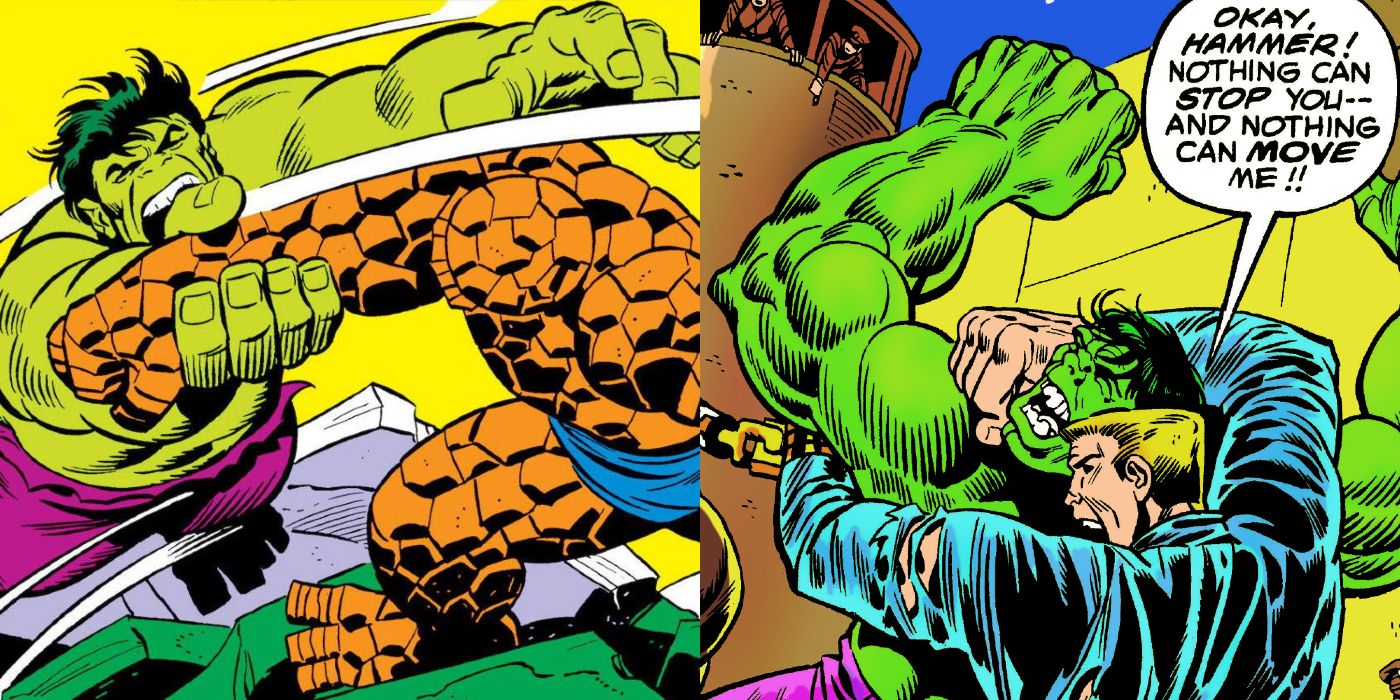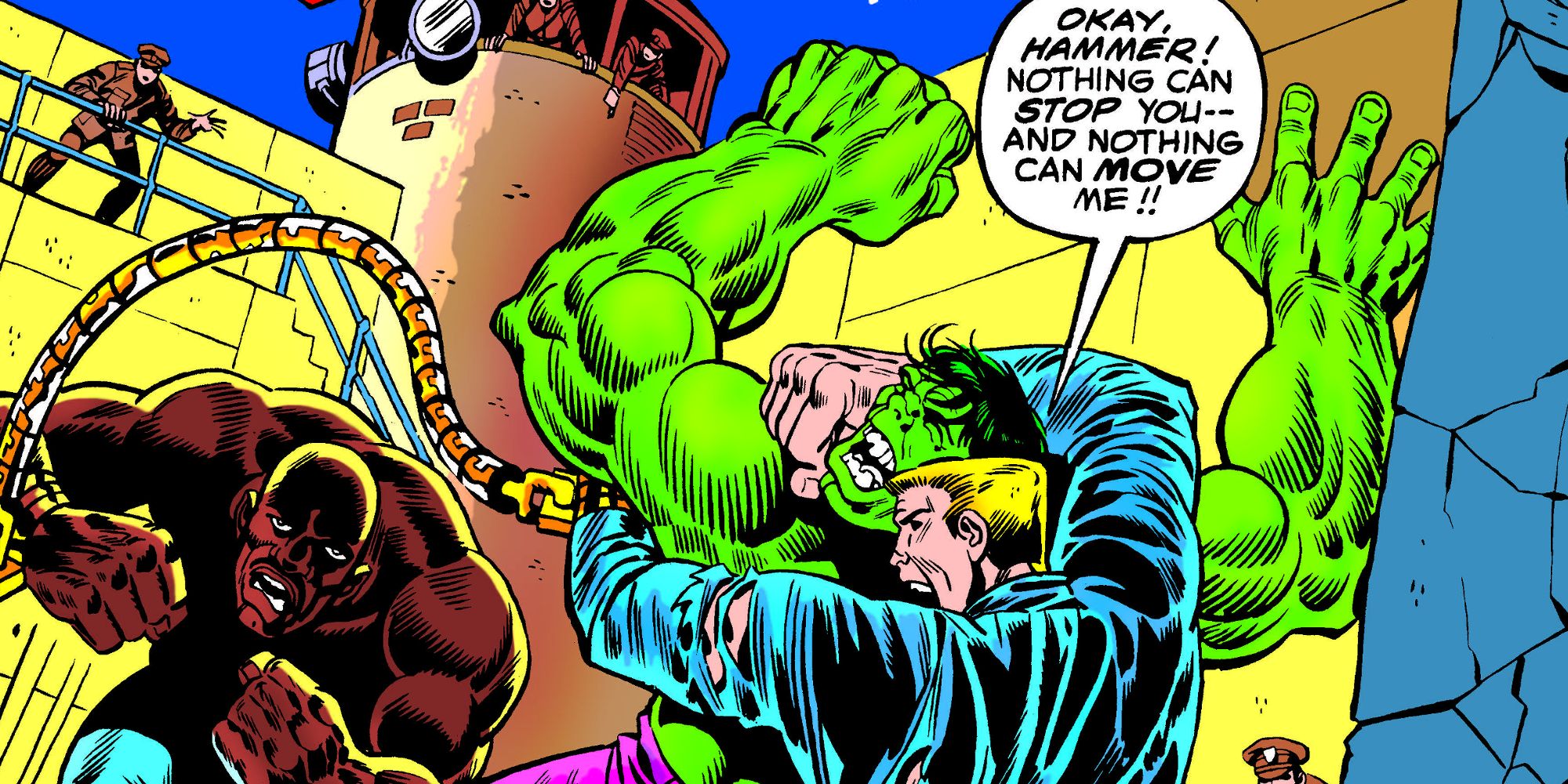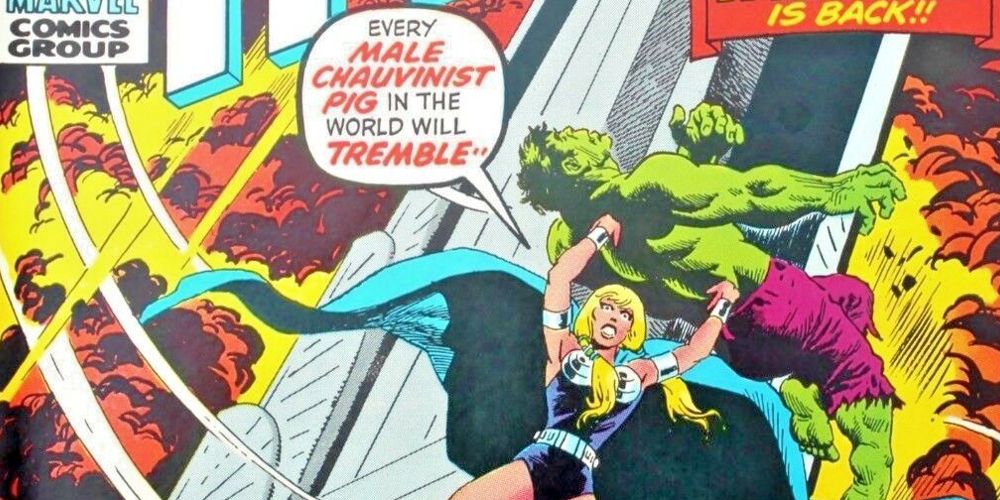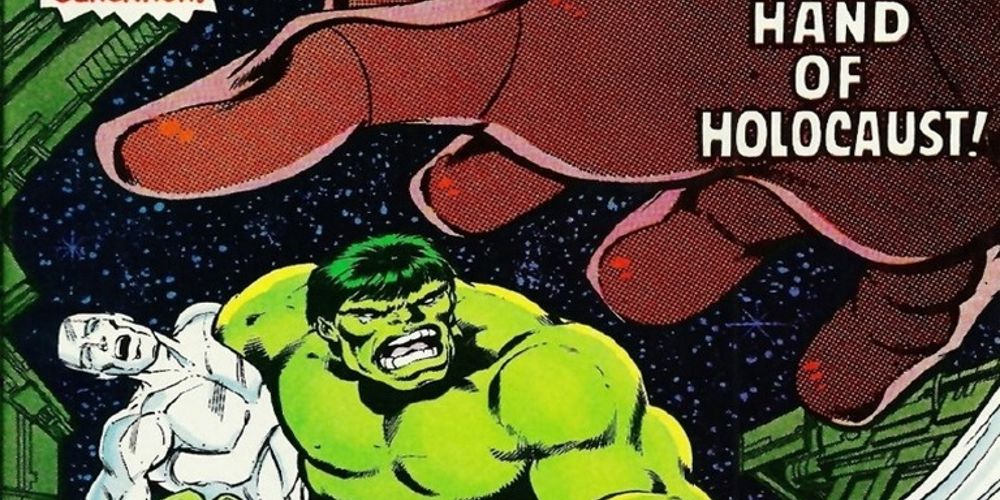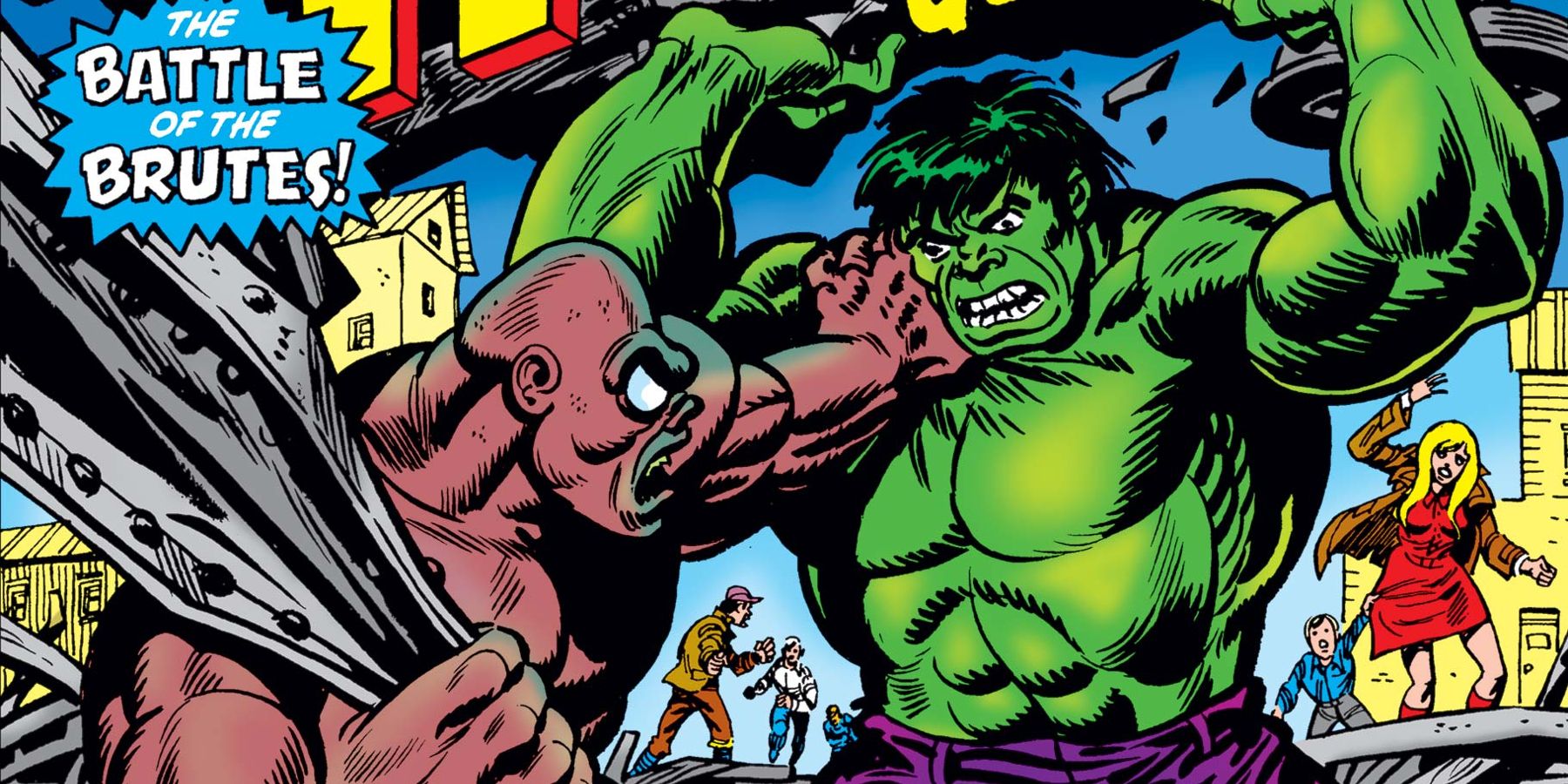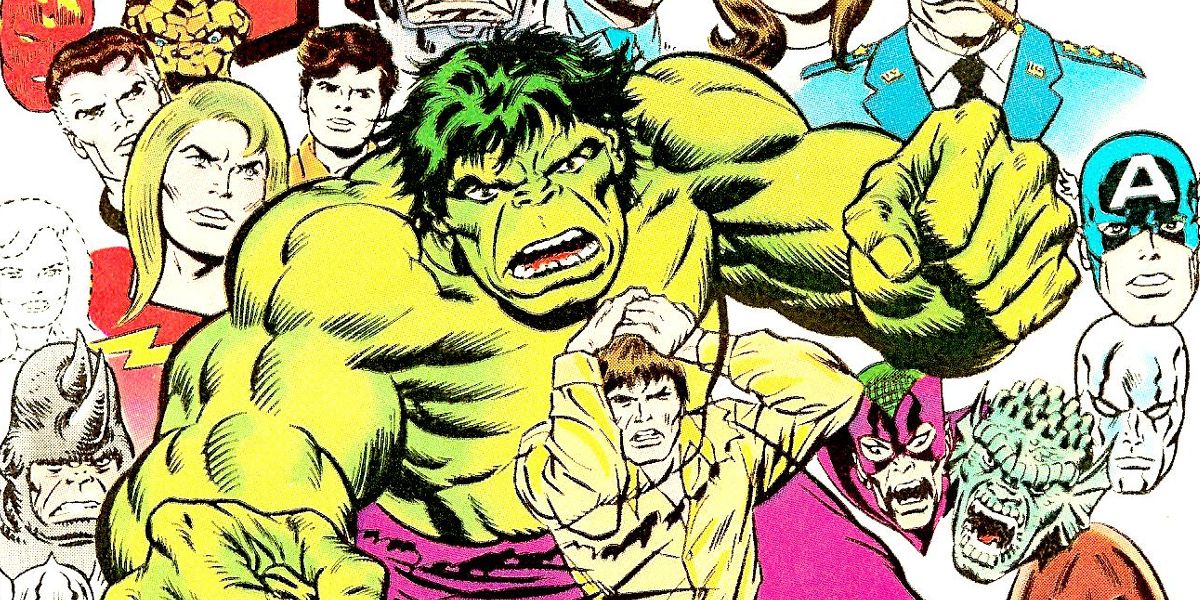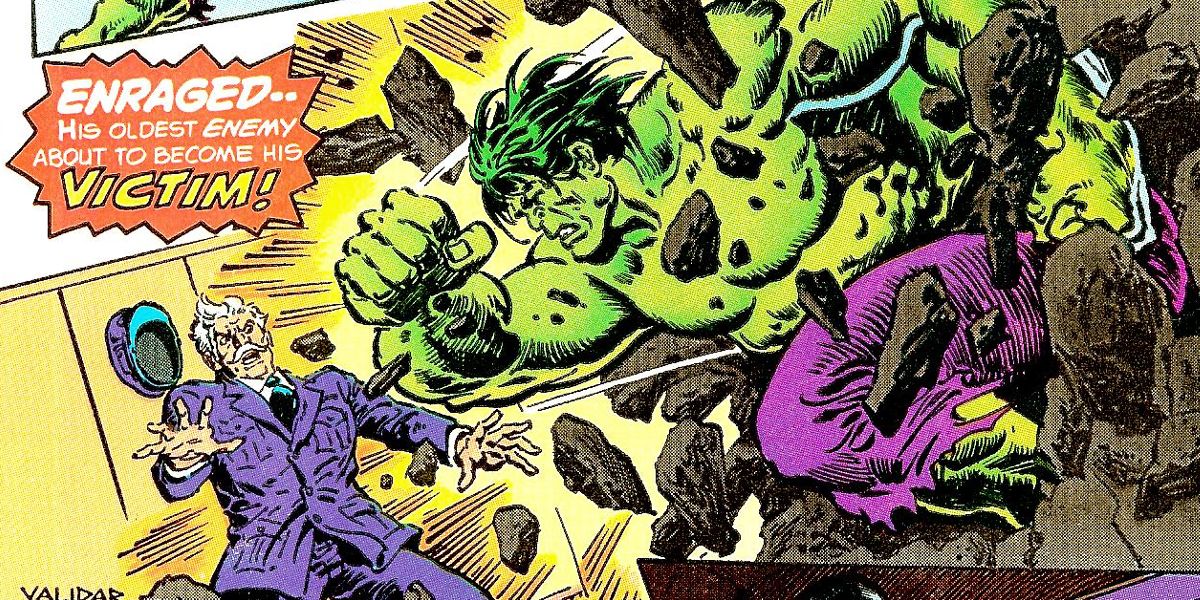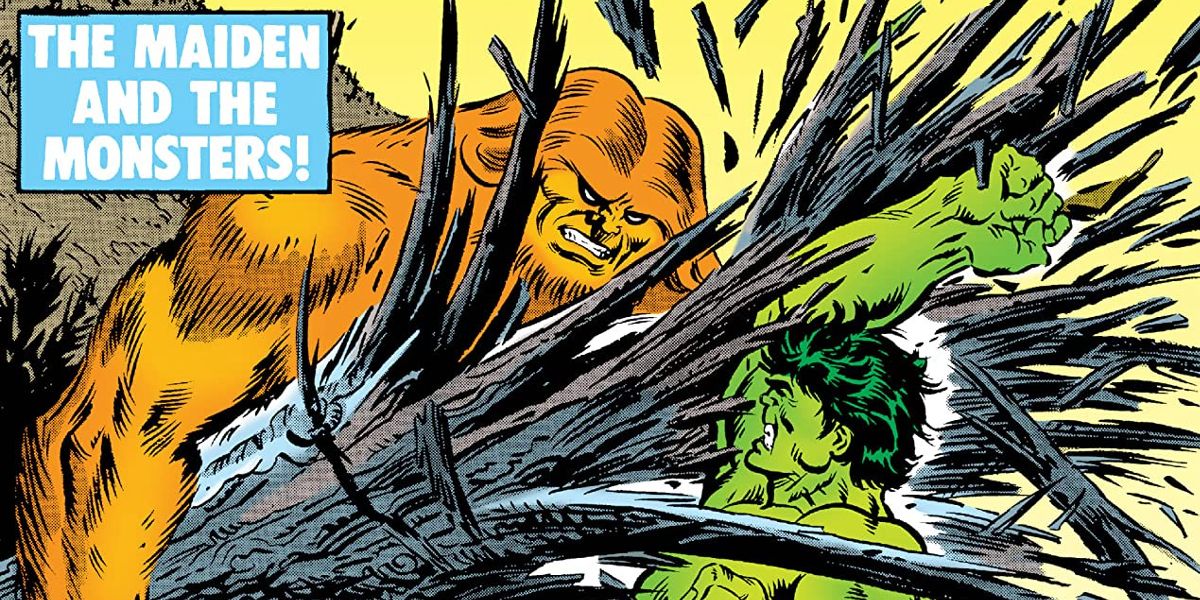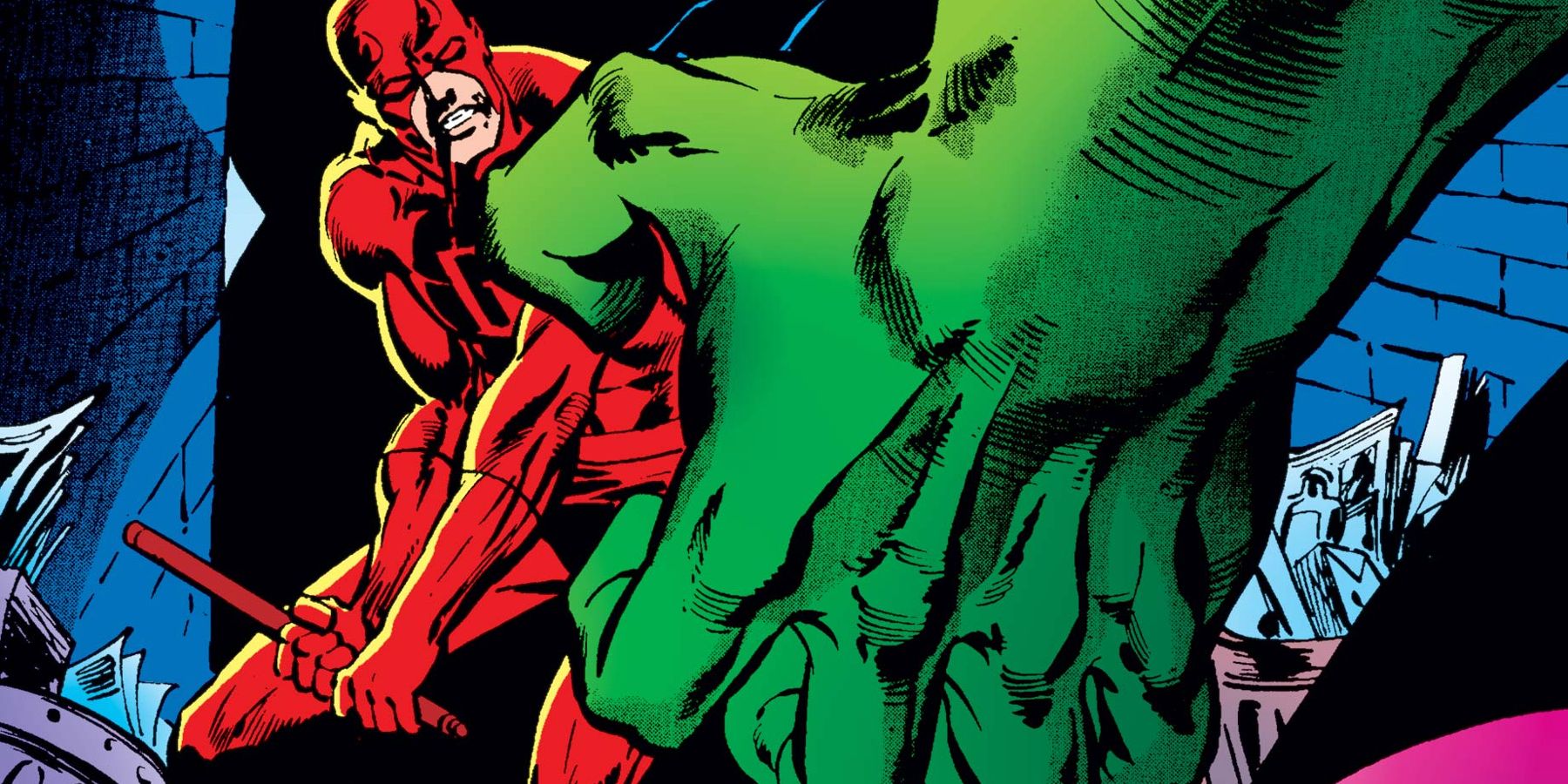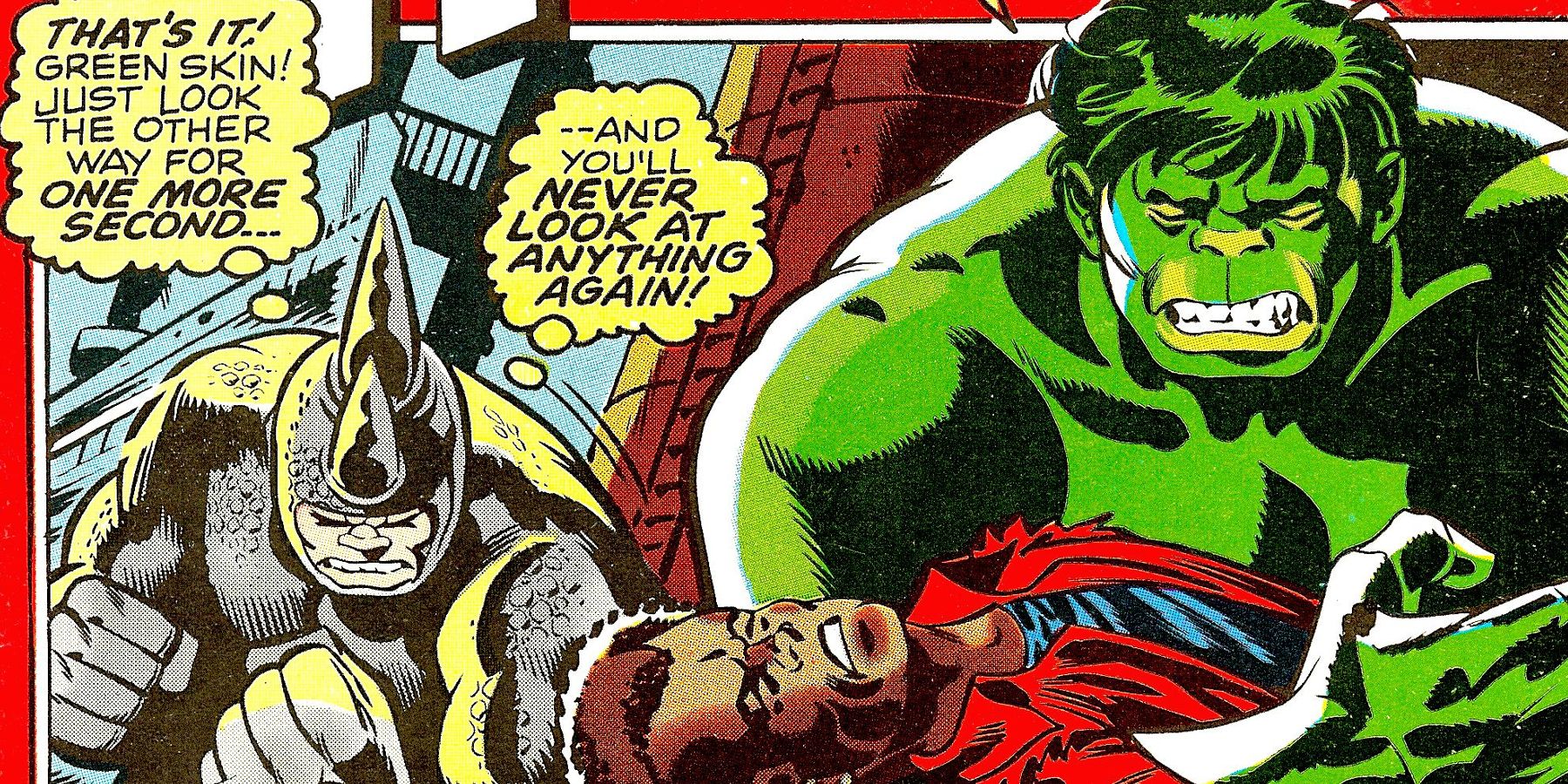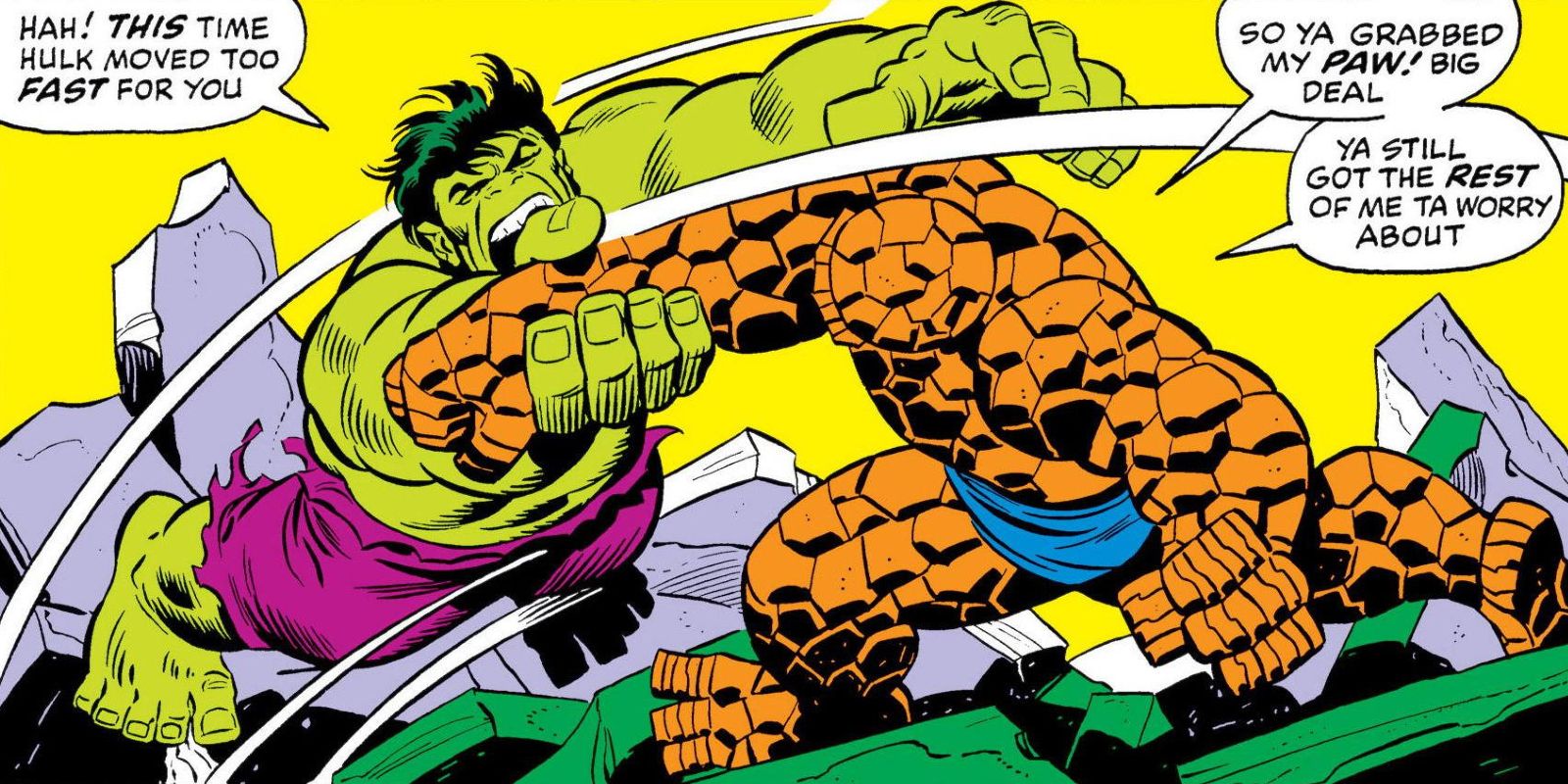The Hulk in the 1970s had a hit television show that ran for five seasons, which a the time Was Marvel's most successful TV venture. The character in the TV series was a monster version of The Fugitive, the 1960s series about a convicted but innocent man on the run from the law. In human form, he drifted from town to town, unable to settle in one place for long.
10 Things You Didn't Know About The 1978 Hulk Series
Later, in the 1980s, writers would merge the minds of the Hulk and his human form of Bruce Banner, turning Hulk gray and intelligent. Still, the familiar "Hulk smash" Hulk of the '70s, who left as much destruction as possible in his wake, remains more familiar. The '70s Hulk never saw a problem that didn't need smashing.
The Incredible Hulk #182 (1974): "Between Hammer And Anvil"
Hulk meets an old, Black musician named Crackajack Jackson, and they bond over beans. As two prison escapees trash the prison, Hulk shows up. During the fight, Crackajack is killed. Hulk buries him in the woods.
Crackajack Jackson recalls the character of the blind hermit from Frankenstein. Just as the hermit didn't treat the monster as a monster, Jackson accepts Hulk without judgement, and the two become friends. It's one of the stranger friendships in Hulk comics, but also one of the most heartwarming. Peaceful encounters like this one were rare in Hulk comics at the time, so this stands out. The scene of Hulk dealing with burying his friend in the woods is quite touching and a nice showing of the Hulk's tender side, something not seen often.
The Incredible Hulk #142 (1971): "They Shoot Hulks, Don't They?"
The Hulk takes a nap on the Statue of Liberty. Two New York socialites decide to throw a fundraiser for him to have his own territory away from the army and police.
This issue is a product of its time, but dated slang aside, it's a good example of the Hulk's relations with the people of New York City, a satire of the "upper crust" and the clueless way they try to solve problems by throwing money at them. Journalist Tom Wolfe even makes a cameo appearance to make this very point. Also, Hulk sleeping on the Statue of Liberty is a classic visual of the '70s run, a very Hulk thing to do.
The Incredible Hulk Annual #7 (1978): "The Evil That Is Cast..."
The Hulk is at Gamma Base when attacked by a Sentinal. Hulk battles but gets captured at the Sentinal's satellite base. Hulk keeps smashing the Sentinal and the satellite until they all escape.
This exciting issue is a prime example of '70s Hulk's classic approach to solving problems: Just keep smashing everything until the problems go away. He smashes the giant robot and the giant robot's space ship; rips off the locked escape pod, throwing the X-Men to Earth; then jumps from orbit into the ocean. The issue also features an appearance by some of the X-Men, a rare Marvel team-up in which the heroes don't fight each other.
The Incredible Hulk #179 (1974): "Re-Enter The Missing Link"
The Hulk reverts back to Bruce Banner. Banner is taken in by an Appalachian family who is also boarding Hulk's old enemy, the Missing Link, now called Lincoln.
So many of the Hulk comics are stories about friendships lost and found, and how Hulk usually ends up out in the cold, friendless and alone. In fact, that was the central theme of most episodes of the Incredible Hulk '70s TV series, with David (Hulk's real name on the show instead of Bruce) alone at the end of each episode, hitchhiking to the next town and adventure. In this issue, the reader sees the townspeople's embrace of Lincoln as their friend while the Hulk walks away, alone.
The Incredible Hulk #200 (1976): "An Intruder In The Mind"
The Hulk, with the mind of Bruce Banner, is shrunken down and inserted into a man's brain. The brain fights back, sending memories of Hulk's enemies to fight him. Hulk kills the lesion attacking the brain, but is accidentally shrunk past the point of return.
Hulk is helping the husband of his ex-girlfriend in this story, and as this is the 200th issue, the creative team throw in all the main enemies and even the Avengers as manifested memories that fight the Hulk. The riff on Fantastic Voyage is a clever idea, and it ends with Hulk lost. As the 200th issue for an anti-hero who had his original title canceled after only a few issues, this one is a milestone that lives up to the occassion.
The Incredible Hulk #215, #216 (1977): "Home Is Where The Hurt Is"
The Bi-Beast has taken over a SHIELD helicarrier and threatens the destruction of Earth. Hulk and the Bi-Beast brutally fight across the helicarrier, finally falling overboard when the engines reboot.
This is a standout issue because it shows the importance of the Hulk having friends. In it, Jim Wilson talks Hulk down and back into Banner. Without someone like Wilson, Hulk is in danger of losing his humanity. This is what leads to Hulk agreeing to help Thunderbolt Ross stop the Bi-Beast, to help save the few friends he has. Hulk doesn't always act selflessly, but when he does, he does it for those he considers his friends.
The Incredible Hulk Annual #8 (1979): "Sasquatch!"
After crashing the wilderness, the Hulk is rescued by a young woman who digs out his head so he can breathe. The government sends Sasquatch from Alpha Flight to find the Hulk, but Sasquatch finds Bruce instead and goads him into changing.
In this issue, Hulk loses another precious friend who had helped save his life. The theme of this story could very well be the cost of hubris, as Sasquatch wanted to fight the Hulk to see who was stronger, but Hulk's strength is powered by fury, and no one is stronger. The madder Hulk gets, the stronger he gets. Sasquatch nearly causes the death of the young woman and destroys a good part of the wilderness in the process. Hulk was in the right, Sasquatch completely in the wrong, but it's the Hulk who loses.
Daredevil #163 (1980): "Blind Alley"
The Hulk is loose in New York, smashing everything in sight, searching for Banner. Matt Murdock finds him and is able to calm him enough for him to change back.
The issue is another that spotlights the Hulk's inner pain and turmoil. Hulk's search for a friend finds Matt, but he sees Daredevil as his enemy and almost kills him. Again, the reader sees the calming effect that someone whom Hulk trusts can have on Banner, and how devastated he is when he loses that person. He feels that his search for someone who understands him will never end.
The Incredible Hulk #157, 158 (1972): "Name My Vengence, Rhino!"
The Hulk is back, tearing up the Jersey Turnpike. He fights the Rhino, who's mind-controlled by the Leader.
The Hulk is a monster in the Marvel Mold; he's very sympathetic, at times almost pathetic. Here, Bruce finds his girlfriend is getting married, and Hulk loses a woman in the micro-dimension. Seeing the Banner family on the Counter-Earth, he sees even more loss, and it's too much for him. Hulk can find no peace, as Hulk or as Bruce.
Fantastic Four #112 (1971): "Battle Of The Behemoths!"
Bruce Banner is helping Reed Richards when seeing the Thing turns him into Hulk. They tear up half of New York as they fight each other.
Sometimes Hulk comics are great because they're emotionally affecting. Other times, as in this case, they're pure slugfests. This is the third epic battle between the Hulk and the Fantastic Four's Thing. They tear up Central Park, some rooftops, cars, sidewalks, and building facades. It's basically one big, destructive fight through New York City. Its citizens, tired of the damage, try to storm the Baxter Building, the FF's headquarters. Thing is nearly killed, and the Four are devasted. The reader sees the effect of the battle, which leads to a shift in how New York views the FF.

